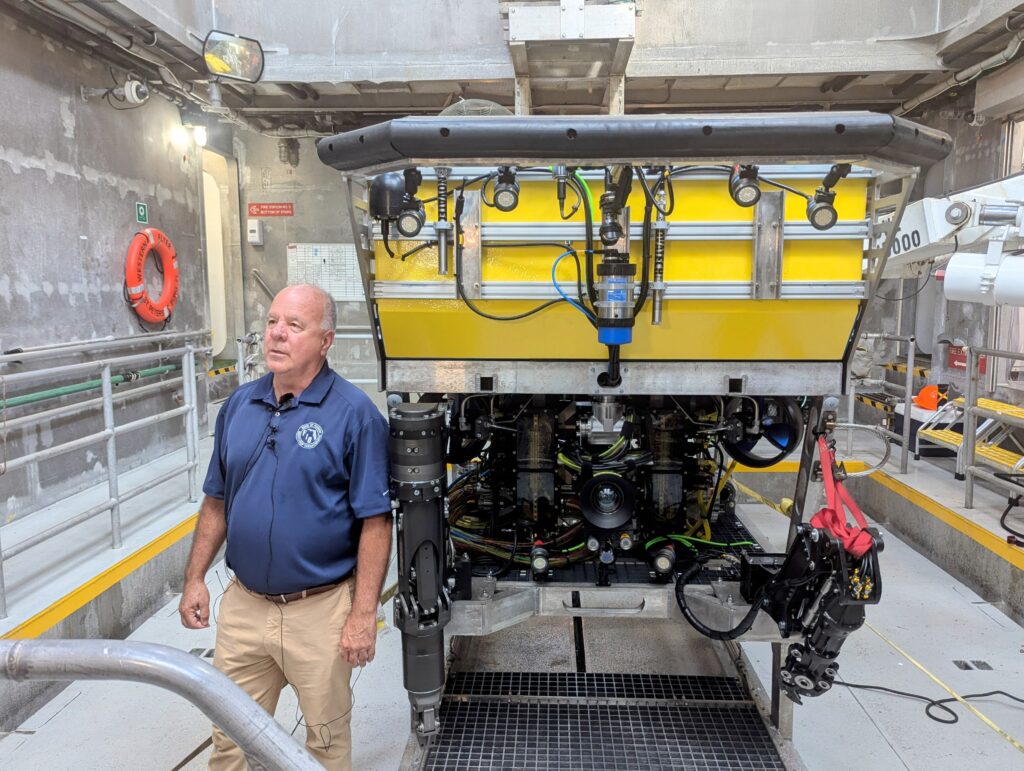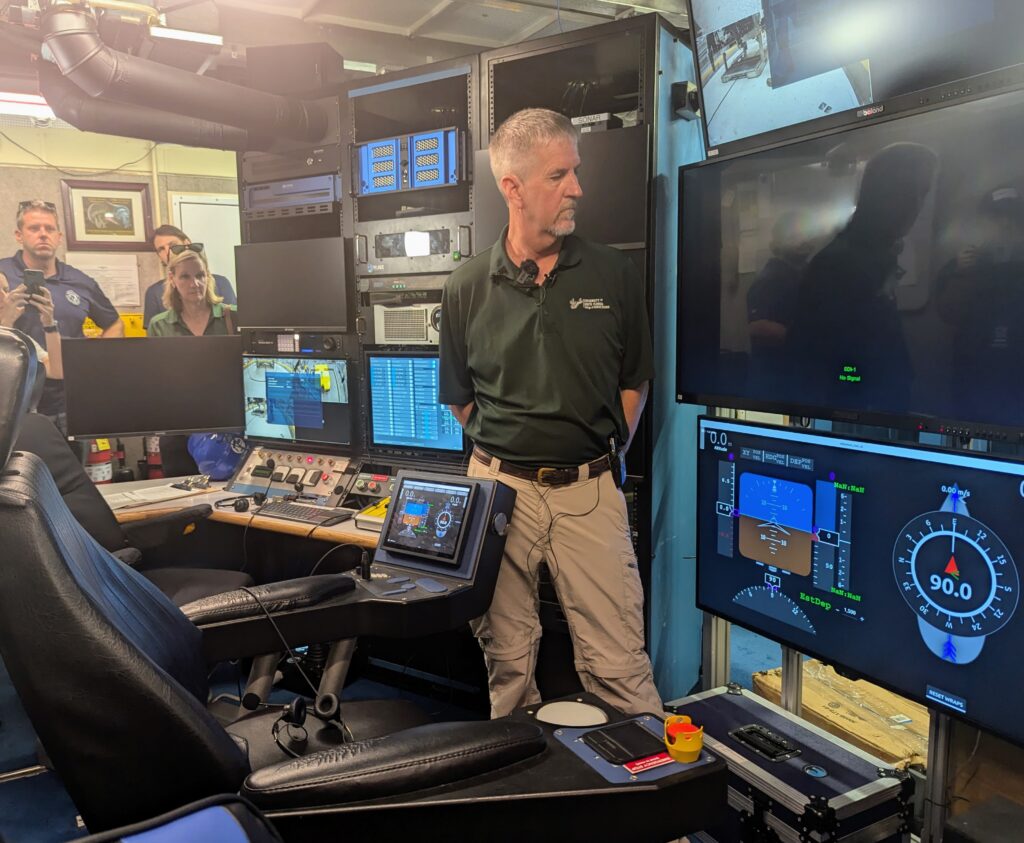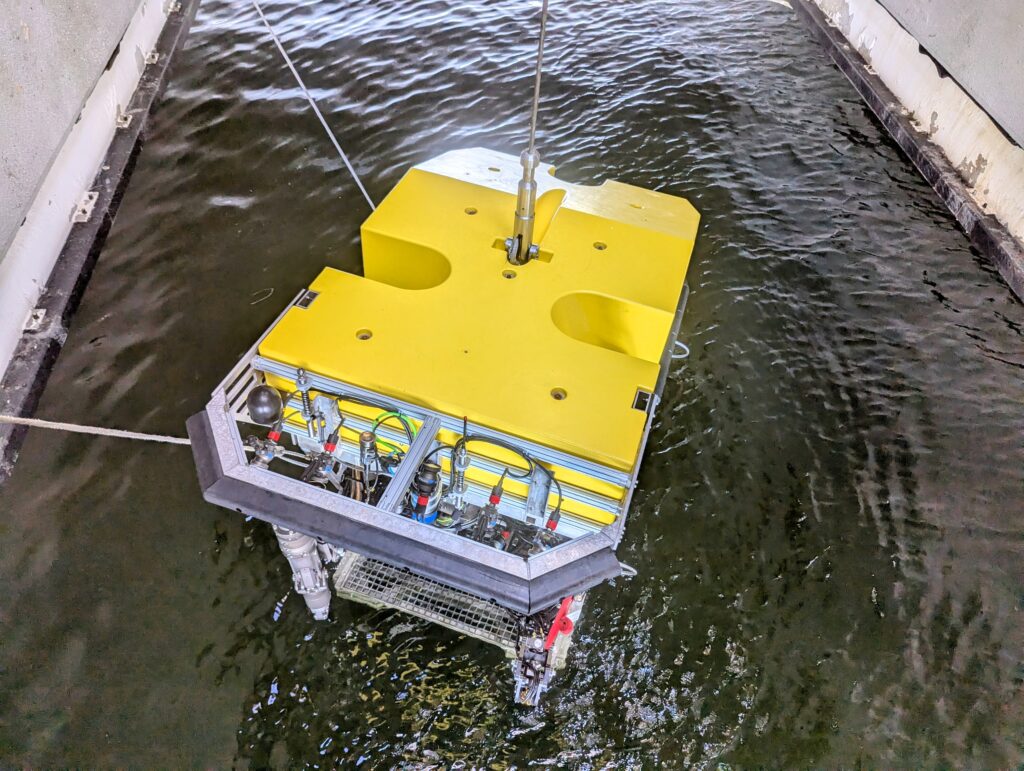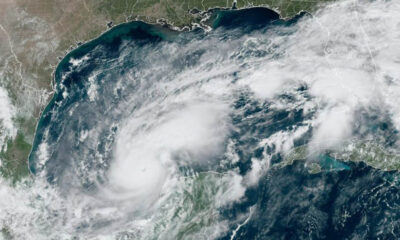Thrive
Local deep-sea explorers have a unique new asset

The University of South Florida St. Petersburg is now the first academic institution in the continental United States to house a remotely operated vehicle (ROV) capable of deep-sea exploration.
The ROV Taurus can reach depths of 2.5 miles and transmit high-definition, live-streamed video to researchers at the Florida Institute of Oceanography (FIO) and its host, the USF College of Marine Science (CMS). A specially designed research vessel stationed along Bayboro Harbor will permanently house the state-of-the-art submersible.
Marine scientists and engineers tested the ROV for the first time Monday morning, ahead of its inaugural mission. Dr. Monty Graham, director of the FIO, explained the moment’s significance.
“This capability just doesn’t exist anywhere close by,” Graham said. “We’re extremely fortunate to have good relationships with our government sponsors – the Office of Naval Research is sponsoring us – and the private sector.
“You see this happen in space, so it has to happen in the ocean, as well.”

Dr. Monty Graham, director of the Florida Institute of Oceanography, stands next to the state-of-the-art submersible.
Pelagic Research Services built and will operate the Taurus. The New York-based company used another ROV to locate the crewed submersible that imploded on its journey to reach the wreck of the Titanic in June 2023.
Edward Cassano, CEO of Pelagic, said the commercial cost for an ROV like the Taurus is “in the multiples of seven figures.” Grant funding and a research partnership with the company will mitigate any expenses for the FIO and university.
The renowned Monterey Bay Aquarium Research Institute donated the Research Vessel Western Flyer to the organizations in November 2022. USF and FIO leadership unveiled the $11.7 million, 117-foot ship in July 2023.
The Western Flyer was specifically designed to house and launch an ROV from a “moon pool” in the center of its hull. USF now joins the University of Hawaii as the only U.S. academic institution to possess a submersible with such advanced capabilities.
Cassano said the Taurus can remain on the sea floor for 58 hours. “There’s a definite role for manned submersibles,” he said. “But these give you a lot more duration and flexibility.”
Nicole Raineault, chief scientist for the FIO, compared the ROV to a work truck. Pelagic built it to carry various mission-specific tools and equipment.
“I’ve been working with these ROVs for over a decade, and almost every expedition I go on, you find a new species,” Raineault said. “We don’t know much about the deep ocean. So, this is going to provide unprecedented access …”
Two seven-function robotic arms will allow scientists and students to gather water, sediment and biological samples. “These are more capable than your arm,” Cassano said. An array of sensors can also measure salinity, temperature and dissolved oxygen levels.
Several 4K cameras will transmit live video to a control room onboard the ship and CMS laboratories on the St. Petersburg campus, and sea trials begin Tuesday. Students and mentors participating in USF’s Peerside program can then utilize the ROV.

Dr. Tom Frazer, dean of the USF College of Marine Science, inside the control onboard the Research Vessel Western Flyer.
The university and FIO developed Peerside to increase ocean STEAM (science, technology, engineering, art and math) workforce inclusivity. The Western Flyer’s size and twin hulls provide more stability than other local research vessels, an important factor when recruiting people unfamiliar with life at sea.
It also offers a full-service galley, sleeping quarters for 16 researchers and 10 crew members, a recreational space and wet and dry labs. However, the ship’s defining feature is its moon pool that will now launch the Taurus.
“We’ve got huge ocean-related issues that are really coming to bear on us very quickly,” Graham said. “We need to know both what the ocean is doing to us – and what we’re doing to the ocean.”
Graham said the Office of Naval Research supported the idea due to impending workforce development issues. The program will intertwine with local and state efforts to support the new blue economy.
Graham said the seafloor is rich in mineral resources used in technological innovations. He added that high-speed ocean-based wireless communications are “on the horizon.”
Dr. Tom Frazer, dean of the CMS, noted the economic impact of biology, chemistry and physics experts and partnering with technological leaders in and outside the surrounding Innovation District. He said their combined efforts would better prepare the area – and the world – for natural disasters and climate change.
In addition, Peerside is an interdisciplinary program that combines traditional marine science with engineering, archaeology, communications and other focus areas. “We’re going to apply this technology, and we’re going to need people who understand how it works,” Frazer said.
“The world is changing, and we’re not just towing nets off the back of boats anymore.”

Dr. Tom Frazer said the Taurus would help propel USF’s reputation as “a powerhouse in the oceanographic space.”







